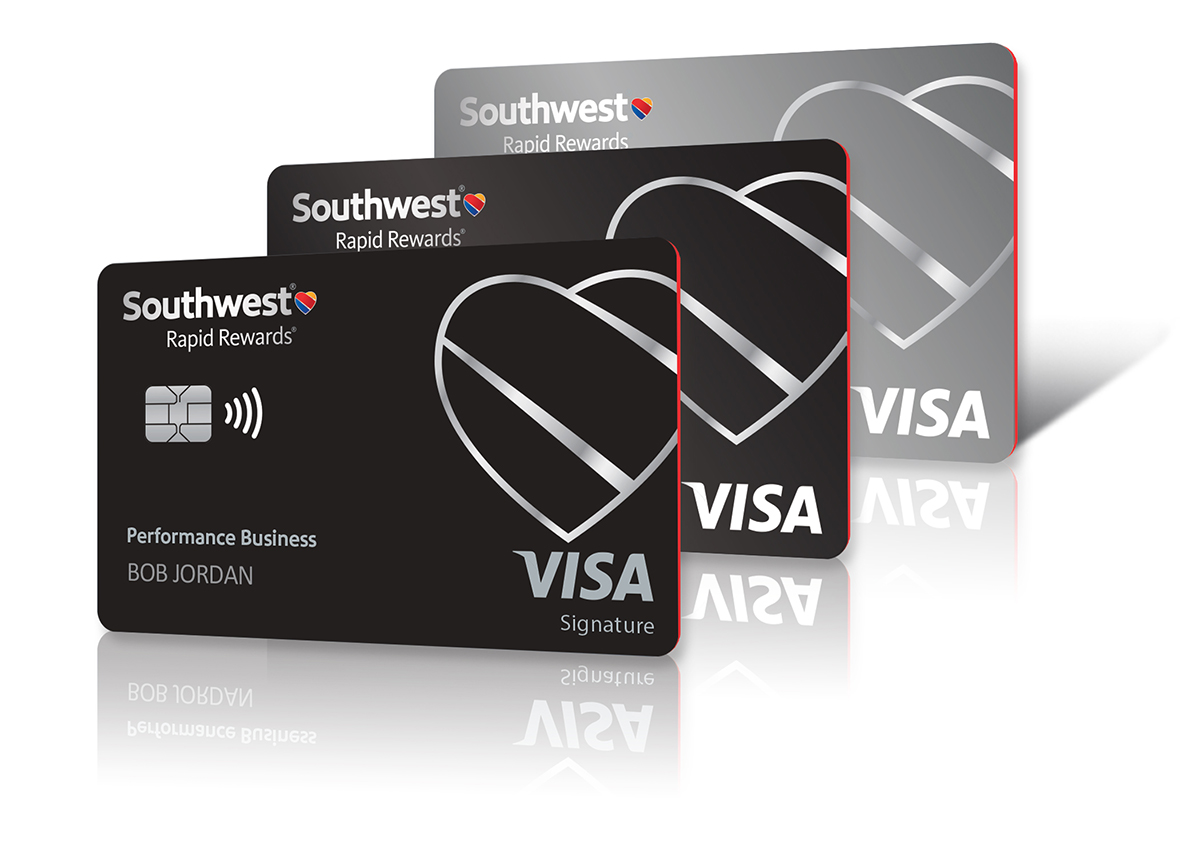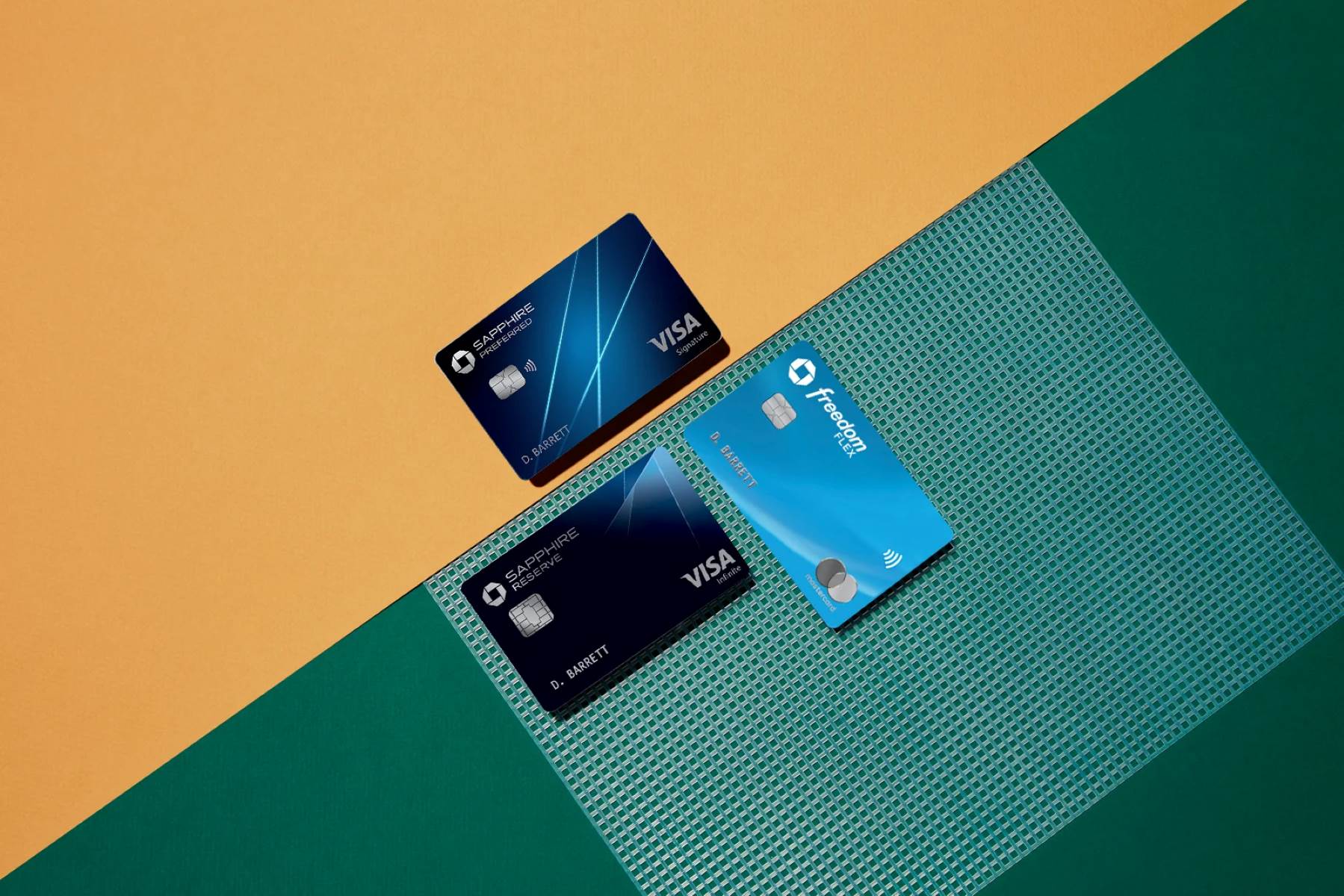

Finance
How To Upgrade Your Credit Card
Modified: February 21, 2024
Learn how to upgrade your credit card and improve your financial status. Discover the latest finance tips and tricks to maximize your credit card benefits.
(Many of the links in this article redirect to a specific reviewed product. Your purchase of these products through affiliate links helps to generate commission for LiveWell, at no extra cost. Learn more)
Table of Contents
- Introduction
- Understanding Credit Cards
- Evaluating Your Current Credit Card
- Researching Available Credit Cards
- Comparing Rewards and Benefits
- Considering Fees and Interest Rates
- Applying for a New Credit Card
- Transferring Your Balance
- Closing Your Old Credit Card
- Managing Your New Credit Card
- Monitoring Your Credit Score
- Conclusion
Introduction
Welcome to the world of credit cards! In today’s financial landscape, credit cards have become an essential tool for managing personal expenses, earning rewards, and building credit history. Whether you’re a seasoned credit card user or considering getting your first card, understanding how to upgrade your credit card can help you maximize the benefits and rewards while minimizing fees and interest rates.
A credit card upgrade refers to the process of transitioning from your current credit card to a new one that better suits your needs and financial goals. Upgrading your credit card can offer a range of advantages, such as higher credit limits, improved rewards programs, lower interest rates, and enhanced security features. However, navigating the world of credit cards can be overwhelming, as there are numerous options available in the market.
In this comprehensive guide, we will walk you through the process of upgrading your credit card step by step. From evaluating your current credit card to researching available options, comparing rewards and benefits, applying for a new card, and managing your new card, we will provide you with valuable insights and tips to make informed decisions throughout the process.
Furthermore, we will discuss important considerations such as transferring your balance from your old credit card, closing your old account, and monitoring your credit score. By the end of this guide, you will have a clear understanding of how to upgrade your credit card and optimize your financial wellness.
So, whether you’re looking to earn more rewards, save on fees, or take advantage of better perks, let’s delve into the world of credit card upgrades and empower you to make the most out of your financial journey.
Understanding Credit Cards
Before diving into the process of upgrading your credit card, it’s essential to have a clear understanding of how credit cards work. A credit card is a financial tool that allows you to borrow money from a financial institution, up to a certain credit limit, to make purchases or pay for services. The borrowed amount, known as the credit card balance, must be repaid within a specified period, typically on a monthly basis.
When you use a credit card for a purchase, you are essentially taking a short-term loan from the credit card issuer. If you pay the balance in full by the due date, you avoid interest charges. However, if you carry a balance on your card, the issuer will charge you interest on the remaining amount.
Credit cards offer several benefits beyond just convenient payment options. They can help you build a good credit history, as your credit card activity is reported to credit bureaus. A positive credit history demonstrates your ability to handle credit responsibly and can pave the way for future financial opportunities, such as getting approved for loans or mortgages at favorable interest rates.
Furthermore, credit cards often come with rewards programs that allow you to earn points, cashback, or miles on your purchases. These rewards can be redeemed for various benefits such as travel, merchandise, gift cards, or even statement credits, adding value to your everyday spending.
It’s important to note that credit cards should be used responsibly. Overspending or carrying a high balance can lead to debt accumulation, high interest charges, and damage to your credit score. It’s crucial to create a budget, track your expenses, and make timely payments to maintain a healthy financial standing.
Now that we have a fundamental understanding of credit cards, let’s move on to evaluating your current credit card to determine if it’s time for an upgrade.
Evaluating Your Current Credit Card
Before you embark on the journey of upgrading your credit card, take some time to evaluate your current card and assess its effectiveness in meeting your financial needs and goals. Understanding the strengths and weaknesses of your current card will help you make a well-informed decision about whether or not to upgrade.
Start by reviewing the annual fees associated with your current credit card. Some cards have significant annual fees, while others may have no fees at all. Consider whether the benefits and rewards you receive from the card outweigh the cost of the annual fee. If you find that the annual fee is eating into your rewards, it may be an opportunity to explore a new card with more favorable fee structures.
Next, examine the rewards and benefits of your current credit card. Are you earning rewards for the types of purchases you frequently make? Does the card offer cashback, travel rewards, or other perks that align with your lifestyle? Take note of any limitations or restrictions on the rewards program. If your current card falls short in delivering the rewards you desire, it may be time to consider an upgrade to a card with more tailored rewards.
Consider the credit limit of your current card. If you find yourself frequently reaching or exceeding your credit limit, it may be a sign that you need a higher limit to accommodate your spending habits. Upgrading to a card with a higher credit limit can give you the flexibility and purchasing power you need.
Additionally, evaluate the interest rate on your current card. Are you paying a high-interest rate that is eating into your budget? If so, it may be beneficial to explore credit cards with lower interest rates to save money on interest charges.
Finally, assess the customer service and security features of your current credit card. Is the customer service responsive and helpful? Are there features such as fraud protection and purchase protection that provide peace of mind? These factors can contribute to a positive credit card experience and may be worth considering when evaluating whether to upgrade.
By critically evaluating your current credit card, you can identify areas where it falls short and determine which features and benefits are most important to you. Armed with this information, you will be better equipped to research and select a new credit card that suits your financial needs and goals. In the next section, we will explore how to research available credit cards to find the best match for you.
Researching Available Credit Cards
Once you have evaluated your current credit card and identified areas for improvement, it’s time to begin researching available credit cards in the market. With countless options to choose from, conducting thorough research will help you find a credit card that aligns with your financial goals and preferences.
Start by identifying the type of credit card that best suits your needs. There are various types of credit cards available, including rewards cards, cashback cards, travel cards, and secured cards for those looking to build or rebuild credit. Determine which category of credit card aligns with your spending habits and financial goals, as this will narrow down your options.
Next, consider the credit card issuers. Financial institutions, such as banks and credit unions, offer a range of credit cards with different features and benefits. Research reputable issuers that have a track record of excellent customer service and reliability. Look for reviews and ratings from other cardholders to gauge their satisfaction and overall experience.
When comparing credit cards, pay attention to the rewards programs. Examine the earning structure, redemption options, and any limitations or restrictions that may apply. Do you earn points or cashback on categories you frequently spend in? Are there any bonus offers or introductory promotions available? Consider how the rewards program aligns with your spending patterns and whether it offers value and flexibility.
Take the time to review the fees associated with each credit card option. Look for any annual fees, balance transfer fees, foreign transaction fees, or late payment fees. Ensure that the benefits and rewards you expect to receive from the card outweigh any potential fees, as excessive fees can significantly impact the card’s value.
Interest rates are another important factor to consider when researching credit cards. Look for cards with competitive interest rates, especially if you anticipate carrying a balance from month to month. Pay attention to any introductory interest rate offers and the duration of those offers, as they may influence your decision-making process.
Consider the additional benefits and features offered by the credit cards you are researching. Some cards may come with travel insurance, purchase protection, extended warranty coverage, or access to exclusive events and experiences. Evaluate which features are most valuable to you and whether they align with your lifestyle and preferences.
Many credit card comparison websites and online resources can assist you in researching available credit cards. These platforms allow you to compare multiple cards side by side, view cardholder reviews, and evaluate features and benefits. Take advantage of these tools to gather all the necessary information and narrow down your options.
By conducting thorough research, you can identify credit cards that meet your specific needs and provide the benefits and rewards you desire. Once you have narrowed down your choices, it’s time to dive deeper into comparing rewards and benefits, which we will explore in the next section.
Comparing Rewards and Benefits
When upgrading your credit card, comparing the rewards and benefits offered by different cards is crucial. The rewards and benefits of a credit card can significantly enhance your overall financial experience and provide added value to your everyday spending. Here are some important factors to consider when comparing rewards and benefits:
1. Rewards Structure: Take a close look at how rewards are earned with each credit card. Some cards offer cashback on specific categories like groceries, gas, or dining, while others provide a flat percentage of cashback on all purchases. There are also cards that offer points or miles for travel-related expenses. Identify which rewards structure aligns with your spending habits to maximize your earning potential.
2. Redemption Options: Explore the options available to redeem the rewards you earn. Look for flexibility in redeeming rewards, such as the ability to convert points into cash, use them towards travel bookings, or redeem them for merchandise and gift cards. Choose a credit card with redemption options that are valuable and aligned with your preferences.
3. Introductory Offers: Pay attention to any introductory offers or sign-up bonuses. Many credit cards offer bonus rewards or a large amount of cashback or points as a welcome bonus. Consider the terms and conditions of these offers, including any spending requirements or time limitations, to ensure they are attainable and worthwhile.
4. Travel Benefits: If you travel frequently, look for credit cards that provide travel-related benefits. This may include airport lounge access, travel insurance coverage, concierge services, and waived foreign transaction fees. These perks can make your travel experiences more convenient and enjoyable.
5. Purchase Protection: Some credit cards offer purchase protection, which safeguards your purchases against damage, theft, or loss. This can provide peace of mind when making significant purchases or traveling with valuable items. Review the extent of purchase protection offered by different cards and determine which level of coverage suits your needs.
6. Annual Fee Consideration: While rewards and benefits add value to a credit card, it’s essential to evaluate whether the annual fee charged for the card outweighs the rewards you receive. If the annual fee significantly eats into your rewards, it may be more beneficial to choose a no-annual-fee credit card instead.
Keep in mind that the best credit card for you will depend on your unique spending patterns, lifestyle, and financial goals. Take the time to compare and analyze the rewards and benefits offered by multiple credit cards to find the one that aligns with your needs and offers the most value.
Once you have narrowed down your options based on rewards and benefits, it’s important to consider the fees and interest rates associated with each card. We will delve into these considerations in the next section.
Considering Fees and Interest Rates
As you continue the process of upgrading your credit card, it’s crucial to carefully consider the fees and interest rates associated with different card options. While rewards and benefits are important, it’s equally important to choose a card with favorable fees and interest rates to maximize the value of your credit card. Here are some key factors to consider:
1. Annual Fees: Many credit cards charge an annual fee for the privileges and benefits they offer. Evaluate whether the annual fee is worth the rewards and features provided by the card. If the annual fee is high and the benefits do not outweigh the cost, it may be more beneficial to choose a card with no annual fee.
2. Balance Transfer Fees: If you plan to transfer a balance from another credit card, consider the balance transfer fees charged by different cards. Some cards offer promotional rates with no balance transfer fees for a limited time. However, be aware of any fees that may apply after the promotional period ends.
3. Foreign Transaction Fees: If you frequently travel abroad or make purchases in foreign currencies, it’s important to assess the foreign transaction fees charged by credit cards. These fees can range from 1% to 3% of the transaction amount, adding up significantly over time. Look for cards with no foreign transaction fees if you plan to use your card internationally.
4. Late Payment Fees: It’s essential to understand the late payment fees imposed by different credit cards. Late payment fees can vary, and missing payments can also result in additional charges, such as increased interest rates. Consider your ability to make payments on time and choose a card with reasonable late payment fees, or better yet, set up automatic payments to avoid any penalties.
5. Introductory Interest Rates: Some credit cards offer introductory 0% APR (Annual Percentage Rate) for a specific period, usually for purchases or balance transfers. Consider the length of the introductory period and any associated terms and conditions to make the most of this offer. After the introductory period ends, be aware of the regular interest rate that will apply.
6. Regular Interest Rates: Credit cards typically charge interest on any carried balances. Compare the regular interest rates offered by different cards, keeping in mind that lower interest rates can save you money if you anticipate carrying a balance occasionally. However, if you plan to pay your balance in full each month, the interest rate may be less of a concern.
By carefully considering the fees and interest rates associated with different credit cards, you can avoid unnecessary costs and select a card that provides you the most value. Remember that a credit card’s benefits should outweigh its fees, allowing you to make the best financial decision.
In the next section, we will discuss the process of applying for a new credit card and what you should keep in mind throughout the application process.
Applying for a New Credit Card
Once you have done your research, compared rewards and benefits, and considered the fees and interest rates of different credit card options, it’s time to apply for a new credit card. The application process can vary slightly depending on the credit card issuer, but here are some general steps to follow:
1. Gather Required Information: Before you begin the application process, gather all the necessary information you will need to provide. This typically includes your personal identification details, proof of income, employment information, and current financial obligations.
2. Determine Eligibility: Review the eligibility criteria for the credit card you wish to apply for. Factors such as credit score, income level, and existing debt may affect your eligibility. Make sure you meet the minimum requirements before proceeding with the application.
3. Apply Online or In-person: Most credit card applications can be completed online through the issuer’s website. Alternatively, you may have the option to apply in-person at a bank branch. Choose the application method that is most convenient for you.
4. Fill Out the Application Form: Complete the credit card application form with accurate and up-to-date information. Take your time to provide all the required details, ensuring there are no errors or omissions. Double-check the form before submitting it.
5. Consent to Credit Check: Understand that when you apply for a new credit card, the issuer will likely perform a credit check. By submitting the application, you give consent for the issuer to access your credit history and assess your creditworthiness.
6. Review Terms and Conditions: Before submitting your application, carefully review the terms and conditions of the credit card you are applying for. Pay attention to interest rates, fees, rewards programs, and any other important details. Ensure you understand the card’s features and the responsibilities that come with it.
7. Submit the Application: Once you are satisfied with the information provided and have reviewed the terms and conditions, submit your credit card application. Depending on the issuer, you may receive an instant decision or a notification of the processing time for your application.
8. Wait for Approval: After submitting your application, you will need to wait for the issuer to review and approve it. The approval process can take anywhere from a few minutes to a few weeks, depending on the issuer’s procedures and the complexity of your application.
9. Activate Your Card: Once your application is approved, you will receive your new credit card by mail. Follow the issuer’s instructions to activate your card, typically by calling a dedicated activation number or through an online portal.
It’s important to note that each credit card application may impact your credit score. Therefore, it’s generally recommended to space out your credit card applications to minimize potential negative effects on your creditworthiness.
By following these steps and being mindful of your personal financial situation, you can navigate the application process smoothly and increase your chances of getting approved for the credit card that suits your needs.
In the next section, we will discuss the process of transferring your balance from your old credit card to your new one, if applicable.
Transferring Your Balance
If you have a balance on your old credit card that you want to transfer to your new credit card, you can take advantage of balance transfer offers. Transferring your balance can help you consolidate your debts and potentially save on interest charges. Here are the steps to transfer your balance:
1. Check for Balance Transfer Offers: Review the terms and conditions of your new credit card to see if it offers balance transfer options. Look for promotional rates, such as 0% APR for a specific period, specifically for balance transfers.
2. Evaluate the Balance Transfer Fee: Many credit cards charge a balance transfer fee, typically a percentage of the total balance being transferred. Consider whether the fee is worth the potential interest savings you may gain from the promotional rate. If the fee outweighs the benefits, it may be better to pay off your old card without transferring the balance.
3. Contact the New Credit Card Issuer: Get in touch with the new credit card issuer to initiate the balance transfer process. They will provide you with the necessary instructions and may require information about the old credit card and the balance to be transferred.
4. Provide the Required Information: Typically, you will need to provide details about the old credit card, including the account number, the amount you wish to transfer, and the issuer’s contact information. Be prepared to provide accurate information to facilitate a smooth transfer.
5. Wait for the Transfer to Complete: After initiating the balance transfer, it may take some time for the process to complete. The timeline can vary depending on the issuers involved, but generally, the transfer should occur within a few business days to a few weeks.
6. Continue Making Payments: While the balance transfer is in progress, it’s important to continue making payments on your old credit card until the transfer is confirmed. This ensures you maintain a good payment history and avoid any late fees or penalties.
7. Monitor the Transfer: Stay vigilant and monitor the balance transfer to ensure it is completed successfully. Keep track of your old and new credit card accounts to make sure the balance is transferred as expected. If there are any discrepancies or issues, contact the card issuers for assistance.
8. Pay Attention to Promotional Period: If your new credit card offers a promotional 0% APR for balance transfers, be mindful of the promotional period’s expiration date. After this period ends, the regular interest rate, as stated in the terms and conditions, will apply to any remaining balance.
Transferring your balance can be a strategic move to reduce interest charges and simplify your debt repayment. However, it’s important to evaluate the costs and benefits before proceeding with a balance transfer. Consider your financial situation, the balance transfer fee, and the promotional period to make an informed decision.
In the next section, we will discuss closing your old credit card after completing the balance transfer, if applicable.
Closing Your Old Credit Card
Once you have successfully transferred your balance to your new credit card, you may be considering closing your old credit card account. Closing an old credit card can help declutter your financial life and simplify your credit card management. However, before taking this step, consider the potential impact on your credit score and overall credit history. Here are some factors to consider when closing your old credit card:
1. Credit History Length: The length of your credit history plays a role in determining your credit score. Closing an old credit card can shorten your credit history, especially if it’s one of your oldest accounts. If the card has a positive payment history and no annual fees, it may be beneficial to keep it open to maintain a long credit history.
2. Credit Utilization Ratio: Your credit utilization ratio, which is the amount of credit you’re using compared to your overall credit limit, also impacts your credit score. When you close a credit card, the available credit on that card decreases, potentially causing your credit utilization ratio to increase. This can negatively affect your credit score. If your old card has a high credit limit and closing it would significantly impact your credit utilization, it may be better to keep it open.
3. Impact on Average Age of Accounts: The average age of your credit accounts is another factor considered in calculating your credit score. Closing an old credit card can potentially lower your average age of accounts. If your average age of accounts is relatively short, closing the old card could have a more significant impact on your credit score compared to if you have a longer credit history.
4. Annual Fees: Consider whether your old credit card charges an annual fee. If the card no longer offers benefits or rewards that justify the fee, closing it can save you from unnecessary costs. However, if the card has a long credit history and no annual fee, you may choose to keep it open to maintain a positive credit history.
5. Unused Rewards or Benefits: Before closing your old credit card, make sure to redeem any remaining rewards or benefits you have accumulated. Check for any statement credits, cashback, or points that you can use before closing the account.
6. Closing Process: To close your old credit card, contact the issuer’s customer service or visit their website. Inform them of your intention to close the account and follow the specific instructions they provide. Make sure to get confirmation in writing that the account has been closed to avoid any future disputes.
Remember, closing your old credit card should be a carefully considered decision. Evaluate the potential impact on your credit score, credit history, and credit utilization ratio before deciding to close the account. It may be more beneficial in some cases to keep the account open, especially if it helps maintain a positive credit history and low credit utilization ratio.
In the next section, we will discuss how to efficiently manage your new credit card and make the most of its benefits and rewards.
Managing Your New Credit Card
Now that you have successfully upgraded to a new credit card, it’s important to develop good habits to effectively manage your card and optimize its benefits and rewards. Here are some tips on how to efficiently manage your new credit card:
1. Create a Budget: Establish a budget to track your expenses and ensure you can comfortably pay off your credit card balance each month. Keep track of your spending and avoid overspending, as carrying a high balance can lead to accumulating debt and paying unnecessary interest charges.
2. Pay On Time: It is crucial to make your credit card payments on time to avoid late payment fees and potential damage to your credit score. Set up automatic payments or schedule reminders to help you stay on top of due dates and ensure timely payments.
3. Monitor Your Statements: Regularly review your credit card statements to check for any unauthorized transactions or errors. Monitoring your statements can help you detect fraudulent activity early and dispute any incorrect charges promptly. Consider signing up for email or text notifications for added security.
4. Utilize Online Banking: Take advantage of online banking services provided by your credit card issuer. These platforms allow you to conveniently access your account, view transactions, make payments, and track your rewards. Stay proactive in managing your card by regularly logging into your online account.
5. Maximize Rewards: Familiarize yourself with the rewards program of your new credit card and understand how you can earn and redeem rewards. Tailor your spending to maximize rewards by using your card for purchases that align with the rewards structure. Look for bonus categories, promotions, and special offers that can boost your rewards earning potential.
6. Minimize Fees: Be mindful of any fees associated with your new credit card, such as annual fees, late payment fees, or balance transfer fees. Avoid unnecessary charges by paying your balance in full each month to avoid interest charges and by making timely payments to avoid late fees.
7. Maintain a Low Credit Utilization: Aim to keep your credit utilization ratio low to maintain a healthy credit score. Use your credit card responsibly and avoid maxing out your credit limit. Ideally, keep your credit utilization below 30% to show lenders that you are utilizing credit responsibly.
8. Keep Your Information Secure: Protect your credit card information from unauthorized access. Only provide your card details to trusted and secure websites or merchants. Be cautious with phishing attempts and regularly monitor your credit card activity for any fraudulent transactions.
By following these tips, you can effectively manage your new credit card and make the most of its benefits and rewards. Responsible credit card usage will not only help you stay on top of your finances but also contribute to building and maintaining a positive credit history.
In the next section, we will discuss the importance of monitoring your credit score and how to keep track of it.
Monitoring Your Credit Score
Regularly monitoring your credit score is an essential part of managing your financial well-being. Your credit score is a numerical representation of your creditworthiness and plays a crucial role in your ability to secure loans, mortgages, or favorable interest rates. Here’s why monitoring your credit score is important and how you can keep track of it:
1. Track Credit Health: Monitoring your credit score allows you to keep a pulse on your overall credit health. By regularly checking your score, you can observe any changes or trends that may affect your ability to access credit in the future. This enables you to identify any negative factors that may be impacting your score and take steps to improve it.
2. Detect Errors or Fraudulent Activity: Checking your credit score regularly helps you identify any errors on your credit report or potential instances of identity theft. If there are any discrepancies or unfamiliar accounts, you can take immediate action to rectify the situation by contacting the credit bureaus and the respective creditors to dispute inaccurate information.
3. Identify Areas for Improvement: Monitoring your credit score gives you insights into the factors that impact your score the most. By understanding the components that make up your score (such as payment history, credit utilization, length of credit history, types of credit, and new credit inquiries), you can identify areas for improvement. This knowledge empowers you to make positive changes in your financial habits and work towards boosting your creditworthiness.
4. Plan for Future Financial Goals: Your credit score plays a significant role in your ability to achieve future financial goals. Whether it’s buying a house, financing a car, or applying for a personal loan, lenders use your credit score as a determining factor in their decision-making process. Monitoring your credit score allows you to assess your creditworthiness and take necessary steps to improve it before applying for significant loans or credit.
There are several ways to monitor your credit score:
1. Free Credit Report: By law, you are entitled to one free credit report per year from each of the major credit bureaus – Experian, Equifax, and TransUnion. You can request your reports from AnnualCreditReport.com, which allows you to review your credit history across all three bureaus. Reviewing your credit report helps you identify any potential errors or discrepancies that may be affecting your credit score.
2. Credit Monitoring Services: Many credit monitoring services are available that provide regular updates on changes to your credit score. These services often include additional features such as credit alerts, identity theft protection, and credit report tracking.
3. Credit Card Issuers: Some credit card issuers offer free credit score monitoring as a benefit to their cardholders. Check if your new credit card provides this service, allowing you to keep track of your credit score conveniently.
4. Third-Party Credit Score Platforms: Numerous online platforms provide free access to credit scores and credit monitoring. These platforms typically give you access to your credit score and provide insights into areas for improvement.
Monitoring your credit score regularly is an essential part of maintaining your financial health. By staying informed and taking necessary steps to improve your creditworthiness, you can set yourself up for future success and achieve your financial goals more effectively.
As we conclude this guide on upgrading your credit card, we hope that you feel empowered to make informed decisions in managing your credit and maximizing the benefits of your new card. By understanding your needs, comparing options, and responsibly managing your credit, you can make the most out of your financial journey.
Conclusion
Congratulations on completing this comprehensive guide on upgrading your credit card! We have covered essential steps and considerations to help you navigate the process successfully. By evaluating your current credit card, researching available options, comparing rewards and benefits, considering fees and interest rates, and applying and managing your new card responsibly, you are well-equipped to make the most out of your credit card upgrade.
Remember to take the time to assess your financial needs and goals, and choose a credit card that aligns with your spending patterns and lifestyle. Consider factors such as rewards programs, fees, interest rates, and additional benefits to ensure you make an informed decision that provides maximum value for your financial well-being.
Furthermore, managing your new credit card responsibly is crucial. Create a budget, pay your bills on time, and regularly monitor your statements for accuracy and potential fraud. By understanding and utilizing the rewards and benefits of your credit card, you can optimize your financial experience and reap the benefits of being a responsible credit card user.
Lastly, monitoring your credit score is essential to maintaining a healthy credit profile. Regularly checking your credit score allows you to track your credit health, identify errors or fraudulent activity, and make necessary improvements to achieve your future financial goals.
Remember, upgrading your credit card is a personal decision, and what works for one person may not work for another. Take the time to evaluate your financial needs, goals, and preferences to select the credit card that best suits you.
We hope that this guide has provided valuable insights and practical tips to guide you through the process of upgrading your credit card. With this knowledge, you can confidently make decisions that enhance your financial wellness and make the most out of your credit card benefits and rewards. Remember to always use credit responsibly and enjoy this new chapter in your financial journey!














